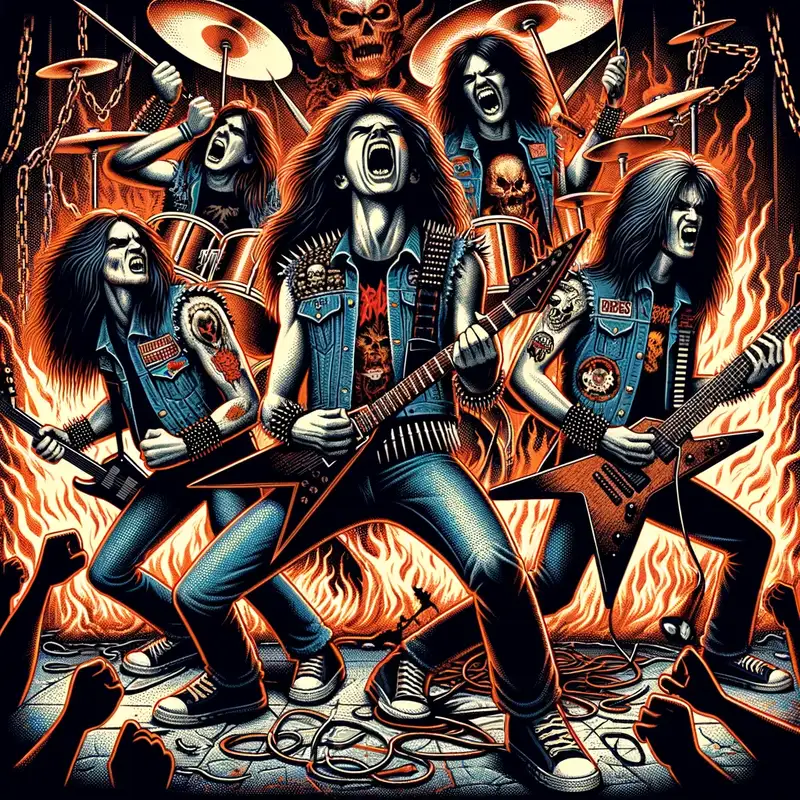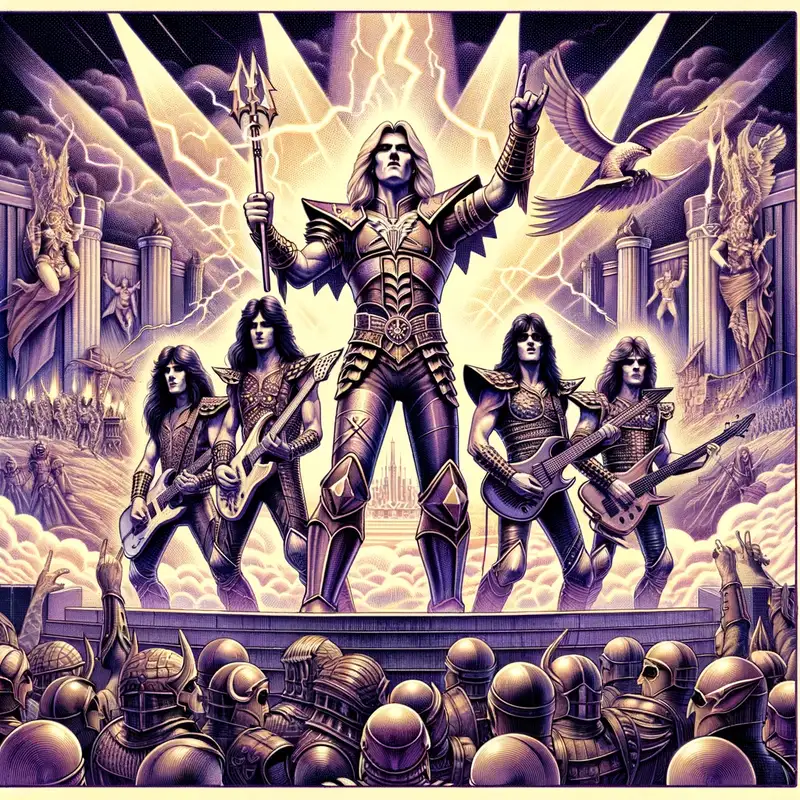Thrash Metal

Thrash metal, a subgenre of heavy metal, originated in the early 1980s, blending the intensity of hardcore punk with the complexities of heavy metal. Bands like Metallica, Slayer, Megadeth, and Anthrax – collectively known as the “Big Four” – played pivotal roles in its early development and popularization.
Table of Contents
Key Characteristics
Speed and Aggression
One of the most distinguishing features of thrash metal is its speed and aggression. Rapid guitar riffs, intense drumming, and shouted or aggressive vocal styles are central to its sound.
Guitar Techniques
Guitar solos in thrash metal are characterized by their speed and technicality. Techniques like palm muting and fast alternate picking are commonly used. The guitar sound is often sharp and heavy, with a focus on fast riffs and complex solos.
Rhythmic Complexity
The drumming in thrash metal is intense and varied. Double bass drumming, complex fills, and rapid tempo shifts are common, giving the genre a distinct rhythmic feel.
Lyrics and Themes
Lyrically, thrash metal songs often address societal issues, warfare, injustice, and political corruption. Some bands also delve into darker and more controversial themes, like death, violence, and the occult.
Evolution Over the Years
Early Years (1980s)
The early 1980s witnessed the birth of thrash metal. Bands like Metallica’s “Kill ‘Em All” and Slayer’s “Reign in Blood” set the blueprint for the genre.
Golden Era (Late 1980s)
By the late 1980s, thrash metal had become a dominant force in the metal scene. Albums like Metallica’s “Master of Puppets” and Megadeth’s “Rust in Peace” achieved commercial success and critical acclaim.
Transition to the 90s
In the 1990s, as alternative and grunge gained popularity, thrash started to wane. However, bands like Pantera emerged, blending thrash with groove elements, giving it a fresh twist.
Resurgence in the 2000s
The 2000s saw a revival of thrash metal, with both older bands returning to their roots and new bands embracing the classic thrash sound.
Influential Albums and Bands
While the “Big Four” (Metallica, Slayer, Megadeth, Anthrax) played a major role, other bands like Testament, Exodus, and Overkill also made significant contributions.
- Metallica’s “Master of Puppets”: Arguably the most influential thrash album, it set the standard for technicality and songwriting in the genre.
- Slayer’s “Reign in Blood”: Known for its breakneck speed and aggressive sound, this album is a cornerstone of thrash metal.
- Megadeth’s “Rust in Peace”: A masterclass in guitar work, this album showcased the band’s technical prowess and intricate songwriting.
Influence
Thrash metal’s impact goes beyond just the metal community. It has influenced numerous other genres, from death metal and black metal to punk and hardcore. Its emphasis on speed, technicality, and aggressive performance has set a benchmark for many metal subgenres that followed.


